 |
 |
 |
| |
Changing Cascade of Care for Hepatitis C in the Era of Direct-Acting Antivirals
|
| |
| |
Reported by Jules Levin
AASLD 2018 Nov 9-13 SF
"Even by 2030, the cure rate among non-NHANES population is projected to remain extremely low at 4%.....Furthermore, whereas the treatment rate increased substantially in the NHANES population from 2010 to 2018 (more than doubles from 27% to 61%), it only increased from 0% to 3% in non-NHANES....Among different subpopulation, HCV treatment rates would remain lowest in incarcerated population at <1%.....Implementing universal HCV screening in all populations will have the biggest impact on improving the cascade of care..... Despite the availability of DAAs, by 2030, under current screening and treatment practice, only 68% people will become aware of their HCV and 49% of all HCV people will receive treatment....".
Jagpreet Chhatwal, Qiushi Chen,1,2 Emily D. Bethea, Turgay Ayer, Yueran Zhuo,1 Chin Hur, Anne Spaulding, Fasiha Kanwal
1Massachusetts General Hospital, Harvard Medical School, Boston, MA; ²Penn State University, University Park, PA; Georgia Institute of Technology, Atlanta, GA;
Columbia University Medical Center, New York, NY; Rollins School of Public Health, Emory University, Atlanta, GA; Michael E. DeBakey Veterans Affairs Medical Center, and Baylor College of Medicine, Houston, TX

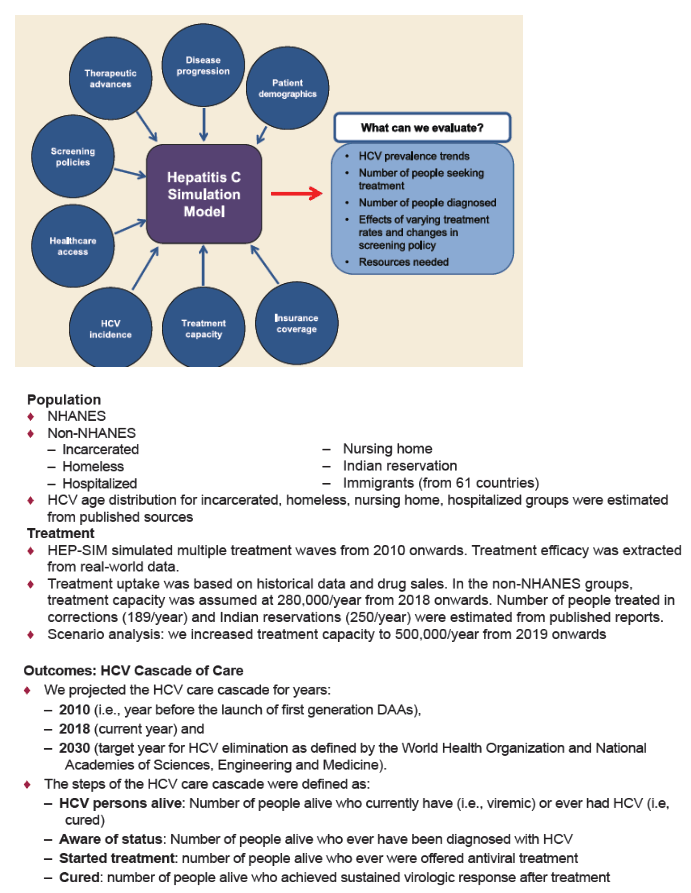
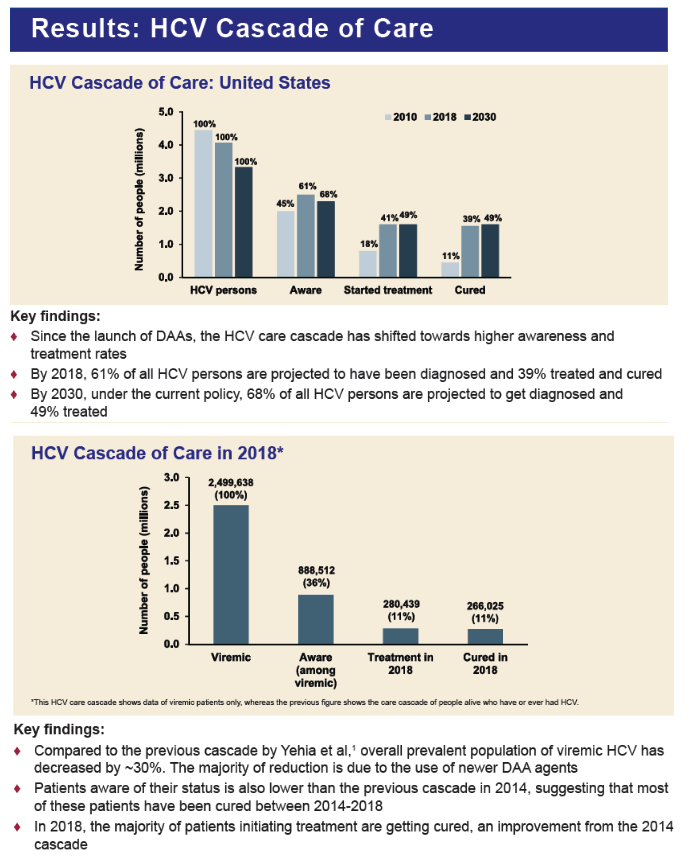
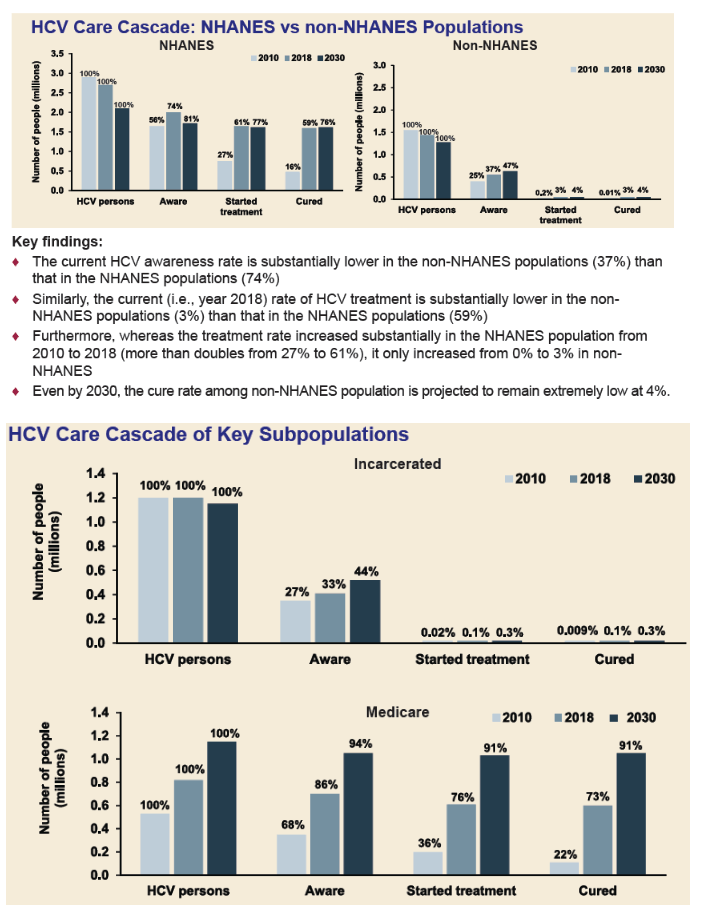
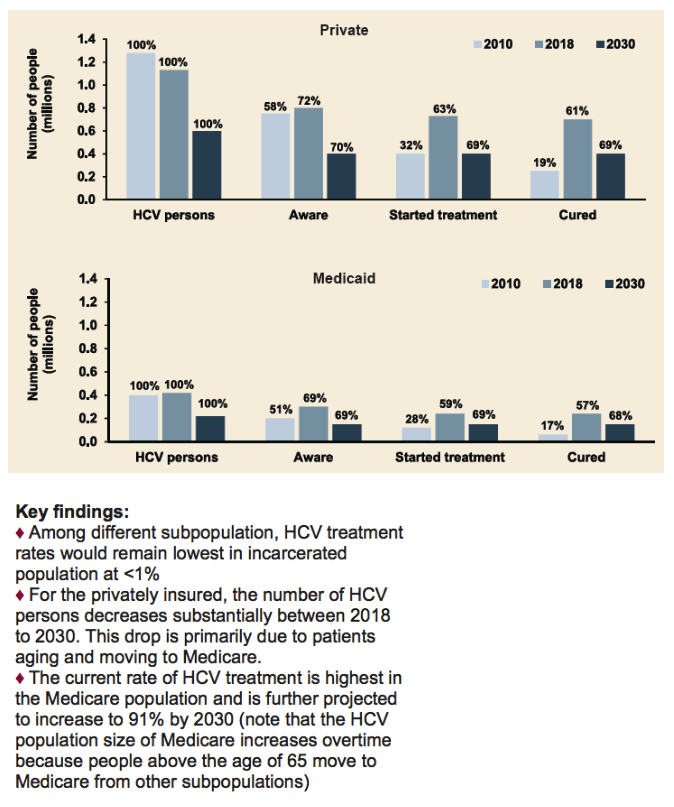
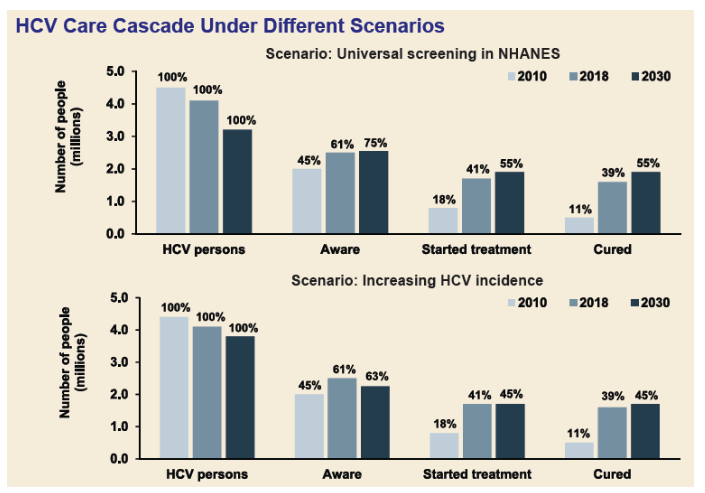
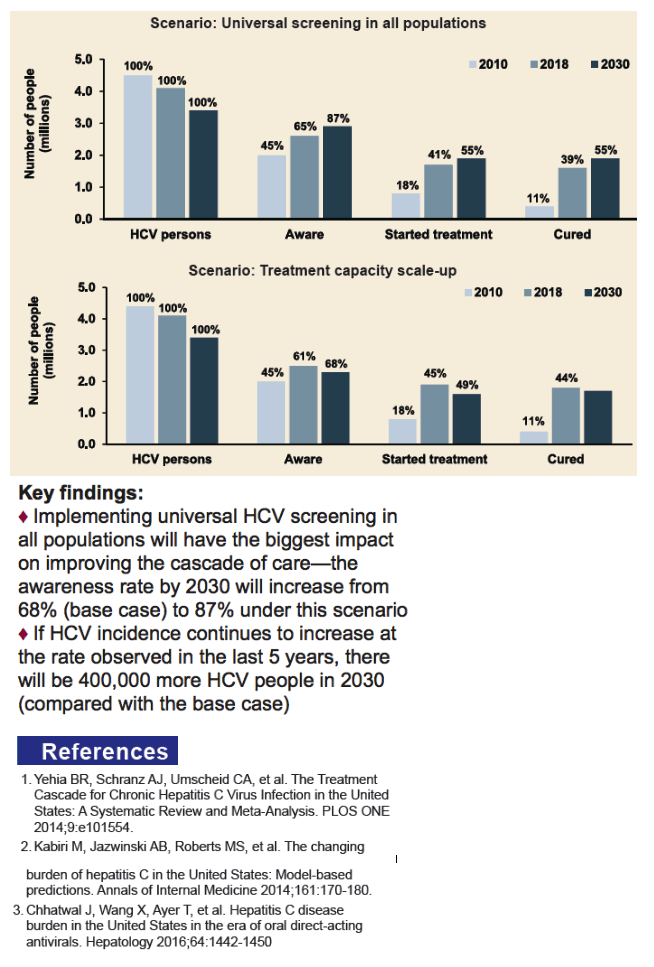
|
| |
|
 |
 |
|
|